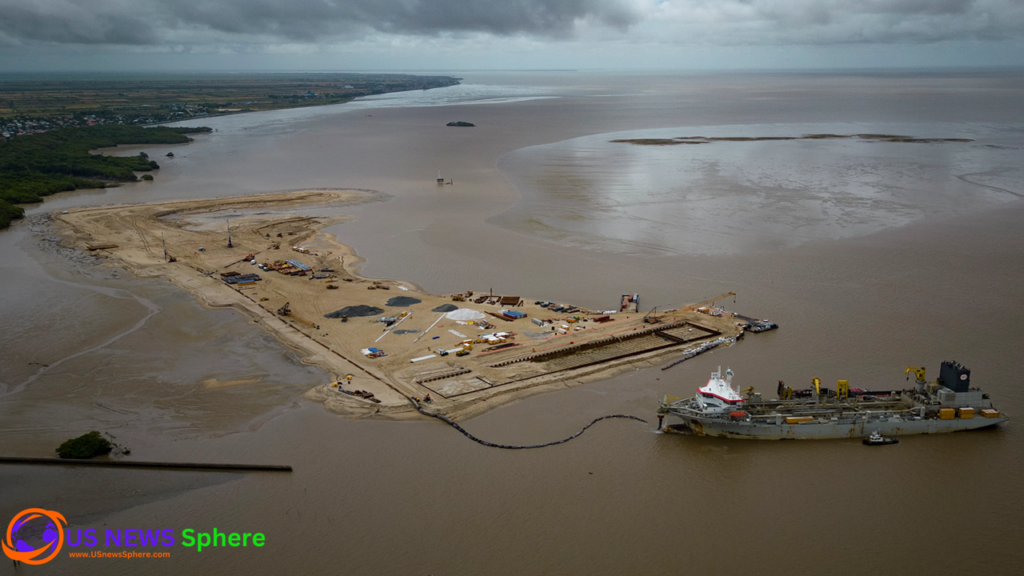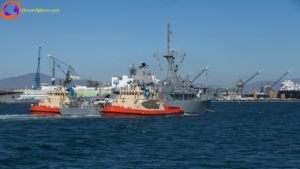Guyana, a South American gem with a population nearing 800,000, is making headlines as the world’s fastest-growing economy. With projections indicating a staggering growth rate of 38% by year-end, the nation is on the brink of an economic revolution, primarily driven by its flourishing oil sector. In this article, we delve into the factors contributing to Guyana’s explosive growth and the opportunities and challenges that lie ahead.
Table of Contents

The Demerara River in Guyana, South America.
IMF and BMI Forecasts – A Beacon of Optimism
The International Monetary Fund (IMF) and BMI, a research unit of Fitch Solutions, are optimistic about Guyana’s economic prospects. The IMF projects a robust 38% growth for the country by the end of the year, while BMI anticipates an explosive 115% growth over the next five years. Andrew Trahan, Head of Latin America Country Risk at BMI, emphasizes that the pace of additional oil production will determine the exact magnitude of this increase.
Oil Production – The Heart of Guyana’s Economic Surge
Guyana’s economic ascent is intrinsically linked to its oil production and export sector. The country is expected to see oil production leap from 390,000 barrels per day this year to over a million barrels by 2027. The Stabroek Block, a 6.6 million-acre offshore oil reservoir, plays a pivotal role, housing an estimated 11 billion barrels of oil. ExxonMobil, leading a consortium, is at the forefront of unlocking Guyana’s oil potential.

As oil boom transforms Guyana, a scramble for spoils
Diversification – A Necessity Amidst Volatility
While oil is the linchpin of Guyana’s growth, the volatility of oil prices necessitates economic diversification. Valerie Marcel, an associate fellow at Chatham House, underscores the importance of diversification to mitigate risks associated with oil dependency, such as corruption and Dutch disease. The latter refers to the paradoxical harm to the broader economy due to rapid development from newfound resources.

No entry to Guyana’s first artificial island being created in Demerara River
Non-Oil Sector Growth – A Balanced Economic Landscape
In addition to its oil sector, Guyana is witnessing growth in non-oil sectors, including agriculture, mining, quarrying, transportation, and housing. Investments in these sectors and efforts to raise human capital are contributing to a balanced economic landscape. The IMF acknowledges the commendable performance of these sectors, highlighting their role in Guyana’s comprehensive economic development.
Political Stability and Social Harmony – Essential for Sustained Growth
Guyana’s journey from being one of the poorest Caribbean countries to showcasing exceptional growth is noteworthy. However, the sustainability of this positive trajectory is contingent upon political stability and social harmony. The country’s historical divisions between its Indo- and Afro-Guyanese populations, coupled with challenges of corruption and organized crime, pose risks. The influx of oil profits necessitates careful management to avoid exacerbating these divisions. (USnewsSphere.com)[npr]
Conclusion:
Guyana stands at the cusp of an economic transformation, with its oil sector acting as the catalyst for unprecedented growth. The optimistic forecasts by IMF and BMI paint a promising picture, but the journey ahead requires careful navigation. Diversification, political stability, and social harmony are imperative for sustaining growth and ensuring that the economic boom translates into holistic development for the nation.





